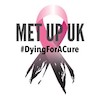I was diagnosed with hormone positive primary breast cancer in February 2022. I had a lumpectomy, chemotherapy, radiotherapy and am now on 10 years of reduce risking hormone repressing therapy.
A year after my initial diagnosis, I attended a summary meeting with my Breast Nurse. This summarized my diagnosis and treatment and, as part of this discussion, I was given a printed infographic of the red flag signs of metastatic (secondary) breast cancer and was talked through what these were how to spot them and what I should do to address symptoms and concerns.
Although the thought of metastatic cancer is extremely scary and stressful at times as it is incurable, I have found it extremely important to understand the potential signs of secondary disease and to be able to discuss this with confidence with my health care providers if I feel like something is a potential red flag sign. Approximately 30% of women who receive a primary diagnosis can at some point, receive a metastatic one and finding this quickly can make a difference.
If this should happen to me, I want to find this at the earliest possible opportunity, so I have as many life prolonging treatments available to me as possible. It doesn’t matter that my tumour was small, nor that it was caught quickly. Cancer cells can still travel to other parts of the body and develop into metastatic breast cancer as much as 20+ years after a primary diagnosis.
I am now a volunteer with METUPUK, we aim to encourage equal access to the drugs that will prolong the lives and improve the quality of life of women living with metastatic breast cancer so they can all spend time with families, have a job, have fun and live.
I also have the pleasure of working with some truly inspirational women who do amazing things for the breast cancer community, and I am proud of the work we do as a charity.

